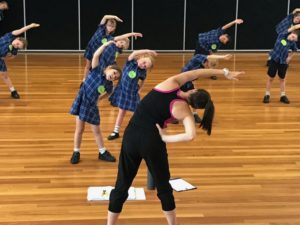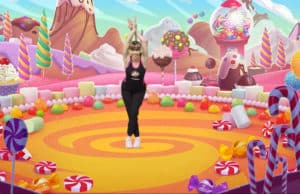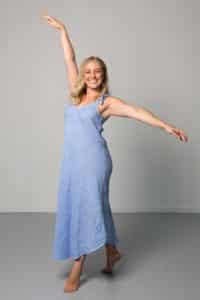Developing STEM skills through dance
Where science ends, art begins
Neigre, 1970
“ Though we may well perceive creativity as the realisation of some natural and innate potential within us, it has rather to be understood within the structures of a very specific culture of the new in late modern society “ (Reckwitz, 2017).
The need for creative skills has progressed over time and is universally depended on in modern society with the “…. twenty-first century requiring young people to be creative, innovative, enterprising and adaptable” (ACARA, 2017).
With the demand for enterprise skills rising over the past 3 years, 75% of jobs demand creative thinking skills within their employees (The New Basics, 2016). This statistic shows educators the significance of responding to the challenges of the twenty- first century by providing experiences for students that enable them to enhance and further develop upon their creativity skills to prepare them for life beyond schooling (ACARA, 2017).
Engagement with the arts plays a significant role in allowing students to do this as they immerse themselves within an environment that is “… socially supported, culturally influenced and collaboratively achieved” (Isbell & Rains, 2007).
As one of the most powerful, and possibly most overlooked resources, the arts has the capacity to intensify learning and tangibly enrich the study of many other disciplines (Jacobs, 2013). Through the interaction of diverse disciplinary means of seeing things, students are encouraged through the arts to view their classmate’s and their own creative capacities for the richness that they are (Robinson, 2006). Robinson (2006) mentioned that the arts constantly develops higher order thinking skills amongst students and as seen in blooms taxonomy, the highest cognitive skill is to create. With this in regard, students are challenged within the arts by utilising their higher order thinking skills to analyse, synthesise and use knowledge to create new products.
The Australian Curriculum, Assessment and Reporting Authority (2017) supports this by stating that music, dance, visual art and drama allow students to “…combine parts to form something original, sift and refine ideas to discover possibilities and act on their intuition”. Through experiences that give students the opportunity to create such as choreographing, composing, writing, improvising or collaborating, children also develop self-discipline, an openness to experience, group trust, a tolerance for ambiguity and an ability to take risks (Piirto, 2011).
In 1949, a psychologist by the name of JP Guilford argued that conventional concepts of intellectual ability focus too strongly on speed, accuracy, correctness and logic, aspects of what he called ‘convergent’ thinking (Cropley, 2001). This convergent thinking in the early 19th century followed the model of an industrialism approach to education, “…a world in which time was to be regulated not by the cycle of sun and moon, but by the factory whistle and the clock “(Toffler, 1970). Although ‘divergent’ thinking has emerged within the 21st century and creativity has ushered in a new era of thinking about intellectual ability, school systems still possess elements of ‘convergent’ thinking (Cropley, 2001). This is seen through current educational landscapes being deeply fixated on standardized tests, measurable outcomes in rigid content areas and increased “achievement” at all costs (Clapp & Edwards, 2013). As a result of this, “…. the arts tend to be relegated to the margins of dominant discussions on education” and are therefore neglected from the school curriculum (Clapp & Edwards, 2013). Robinson (2006) mentions that within the education system, there is a great hierarchy status in regards to subjects that possess great “academic ability”, many schools focus foremost on developing results within areas such as English, Mathematics and Science with the arts curriculum falling behind.
Some schools may forget to note however that arts actually helps build academic skills and increase academic performance, with students with high levels of arts participation frequently excelling peers with little involvement in the arts (Jacobs, 2013). With an uncertainty of what the arts are and the worthwhile outcomes they can produce as well as not feeling adequate enough to teach the arts effectively, a small amount of time is often allocated and as a result some students may stigmatize the arts with being a “bludge “subject (Jacobs, 2013). With this “thought” in mind, students then lack the motivation and confidence to fully engage within the creative process and are therefore afraid to make mistakes. Robinson (2006) mentions if they are not prepared to be wrong, students will never have the potential to develop anything original and as a result will lack skills in creativity.
Picasso (1970) once mentioned that “All children are artists; the problem is to remain an artist as we grow up “. Robinson (2006) goes on to say that modern day education is educating people out of their creative capacities. As creativity depends not on talent alone but on motivation, interest, effort and opportunity, the problem for educators lies in the lack of art opportunities for students within schools (Isbell & Raines, 2007). In order to overcome these challenges, educator’s must seek to align the arts with the same attention and status given to other learning areas seen in the Australian Curriculum. This can be done through the integration of arts within other strands of the Australian Curriculum however it is important to note that the arts inclusion with these areas should not demean its worth (Jacobs, 2013).
With schooling needing to support the development of skills essential for 21st century occupations, the learning areas of science, technology, engineering and mathematics provide opportunities for students to develop the required skills. The developed skills through cross disciplinary being critical and creative thinking, problem solving and digital technologies are the objectives of the STEM school education strategy (Education Council, 2015). What separates stem from traditional science and math education is the blended learning environment that teaches students computational thinking, focusing on real world applications (Education Council, 2015). Land (2013) mentioned that successful progress of STEM education does not “…come from technology alone but from the melding of technology and creative thinking through art and design” (Land, 2013).
Arts integrated within STEM education is an effective teaching strategy that builds connections between art and science whilst also providing engaging context that re-invigorates the platform and allows students to engage with self-expression and personal connection to their learning (Land, 2013). Rinne (2011) mentioned that art integration incorporates many cognitive activities that have been proven to improve long –term memory which is beneficial for development and learning within STEM education. An example of this is seen when children learn number facts through music and singing. Karpicke & Blunt (2011) support this by mentioning that re-reading or elaborating upon meaning is not as effective as recalling aloud and reconstructing information from musical cues.
There is also great correlation between the elements of Music and Dance and Math’s concepts. Through using the skill of, discriminating between rhythm and beat, it allows students to develop their knowledge of patterns and algebra in Math’s. Dance also has great benefits in allowing students to use their muscle memory to physically engage with STEM learning experiences. An example of this is seen through a science activity that integrates locomotor and non locomotor movements to demonstrate gravity or rotation versus revolution of the planets. Through this activity, the elements of dance, particularly dynamics and space, are used to further student’s knowledge on science understanding, the physics of science and challenge their science inquiry skills. It is through this divergent approach to teaching that students develop conceptual methodologies in an innovative way (Law, 2013). Robert Root-Burnstein’s study of scientific Nobel Laureates goes on to demonstrate the significant correlation of cognitive capabilities required for science and dance, with most scientific geniuses between 1902 and 2005 being proficient in science and the arts (Root-Burnstein, 2012).
When a child is taught a concept, the brain creates neural pathways joining the concept to their learning experience and the more neural pathways established, the greater chance of retention (Law, 2013). According to FMRI brain research everyone is a kinesthetic, visual and auditory learner hence by integrating the arts into STEM learning experiences, it utilises all of these learning modalities within children leading to the formation of more neural pathways (Law, 2013). This in return allows students to thoroughly develop their creativity and problem solving skills which are essential to develop STEM concepts.
Skills in mathematics can be developed through the learning area of Dance from the Australian curriculum. Our very own Ella created an online resource a few years ago for year 3 students, focusing on development in the areas of algebra, geometry and space. Students are taken through the land of patterns, giving them the opportunity to describe, create and continue patterns, whilst looking at the symmetry of shapes through the elements of dance.



